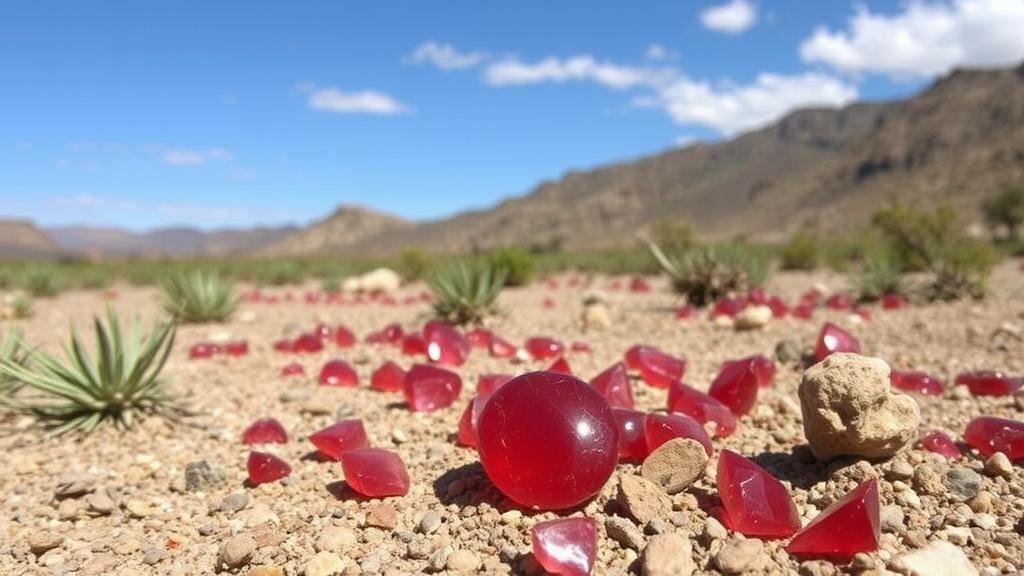Ruby Trails: Unearthing Red Gems in Remote Gravel Deposits
Ruby Trails: Unearthing Red Gems in Remote Gravel Deposits
For rockhounds and mineral collectors, the thrill of discovering gemstones is a passion that often leads to remote locations where nature has hidden treasures. Among these treasures, rubies stand out due to their stunning color, rarity, and the rich geological processes that form them. This article delves into the art of ruby hunting, exploring where to find these red gems in remote gravel deposits, and how to maximize your chances of success.
The Nature of Rubies
Rubies are a variety of the mineral corundum, composed mainly of aluminum oxide (Al2O3). characteristic red color of rubies arises from trace amounts of chromium, which contributes to their vibrant hues. Defined by their hardness, rubies score a 9 on the Mohs scale, making them one of the hardest gemstones available, trailing only diamonds.
Globally, rubies are primarily sourced from regions such as Myanmar, Thailand, and Africa. For rockhounds, the excitement of finding rubies in gravel deposits means understanding the geological conditions that foster their formation and subsequent erosion into these more accessible areas.
Identifying Potential Locations
While the quest for rubies can take you far and wide, certain environments yield more promising results than others. Effective mining typically occurs in two types of geological settings:
- Alluvial Deposits: Rubies can be found in riverbeds and streams where erosion has carried them from their primary source. The movement of water sorts and deposits these gems along the banks and in gravel beds.
- Gravel Pits: Excavations or naturally occurring gravel deposits in metamorphic regions can also lead to successful finds. These locations often concentrate gemstones that have weathered and been transported from their original formation sites.
Tools of the Trade for Rockhounds
As you prepare for your ruby-hunting expedition, having the right tools is essential. Key items to consider include:
- Hand Tools: A good set of hand tools, including a shovel, trowel, and small pick, will help dig through gravel layers effectively.
- Magnifying Glass: To inspect potential finds more closely, a magnifying glass can help you determine whether a stone is indeed a ruby or simply a look-alike like garnet.
- Identification Guide: A field guide on gemstones can help you identify various minerals and rocks as you hunt.
Best Practices for Ruby Collection
When exploring remote gravel deposits, follow these best practices to ensure both safety and respect for the environment:
- Research Local Laws: Before embarking on a collection trip, familiarize yourself with local regulations regarding rockhounding; collecting in some protected areas may be illegal.
- Leave No Trace: Always maintain a respectful approach to nature by filling in holes and taking all rubbish with you.
- Be Mindful of Safety: Areas where gravel deposits can be unstable require cautious navigation. Always let someone know where you’ll be and have an emergency plan.
Practical Tips for Success
To enhance your chances of finding rubies, consider the following strategies:
- Follow the Water: As rubies are often washed downstream, focusing your efforts near riverbanks or confluences can yield better results.
- Time Your Visits: Visually inspect locations after heavy rains when rising waters may have uncovered new gems.
- Look for Tell-Tale Signs: Potential ruby-bearing gravel may contain quartz or other mineral inclusions, indicating that gemstones might be nearby.
Conclusion
Ruby hunting in remote gravel deposits offers an exhilarating experience for collectors keen on unearthing natures precious red gems. By understanding the geological conditions, employing the right tools, and following environmental best practices, you can enhance your journey in search of these stunning gemstones. Whether youre an experienced rockhound or new to the hobby, the thrill of discovery awaits on the ruby trails!



